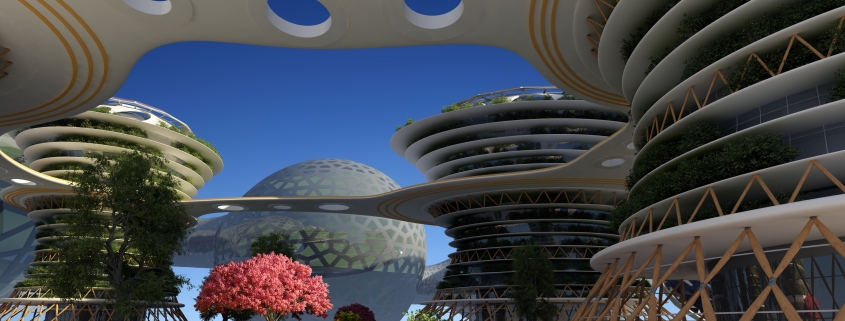What Will Construction Look Like in a Circular City?
In the 10th episode of the Prefecture Go Podcast, we dive into the topic of construction in the circular city. After discussing network servers, power grids, agriculture, water, transportation, and medical, it makes sense to follow with construction, which will tie them all together and make them a reality. How will we build the agricultural systems, modes of transportation, and other technology we have discussed in previous podcasts?
How will we build our circular city? What construction styles, techniques, and architecture will be used?
The Monolithic Dome
Monolithic domes are versatile, dome-shaped structures built with reinforced-steel concrete and polyurethane foam insulation. These extremely durable structures are known for surviving severe natural disasters like hurricanes, tornadoes, earthquakes, fires, and more. The domes are eco-friendly and energy efficient as they use 50% less energy for heating and cooling compared to conventional structures.
In addition, these monolithic domes can fill a variety of architectural needs from residential homes to commercial buildings. The major advantages of these structures within a circular city would be their low energy consumption, durability, disaster resistance, and low maintenance. Monolithic domes can also perform well in just about any climate and landscape. Are there any disadvantages you can see?
3-D Printing
A 3-D printer would be able to build the walls and foundation of a house in a few days rather than the weeks and months it would take to build manually. It would create and print the materials off-site and then assemble the house on-site at a later date. 3-D printing not only dramatically speeds up the construction of a house, but it limits construction waste, reduces scraps, and reduces the costs associated with the transport of materials. 3-D printers could also be developed to make houses out of sustainable, renewable materials.
Prefabricated Construction
Prefabricated construction is the process of building construction components (walls, roof, floor) for residential or commercial projects off-site instead of on-site. Making the building materials, putting them together in another location, and then transporting them to the final site have many advantages. Prefabricated construction increases safety with a controlled off-site environment, reduces site disruption, reduces material wastes, and lessens disturbances such as water, air, or noise pollution. Quick, cost-effective, and eco-friendly—prefabricated construction is sure to be common in a circular city.
What types of construction do you see in a circular city?
We want to hear from you! Join the conversation and drop a comment below!





Leave a Reply
Want to join the discussion?Feel free to contribute!